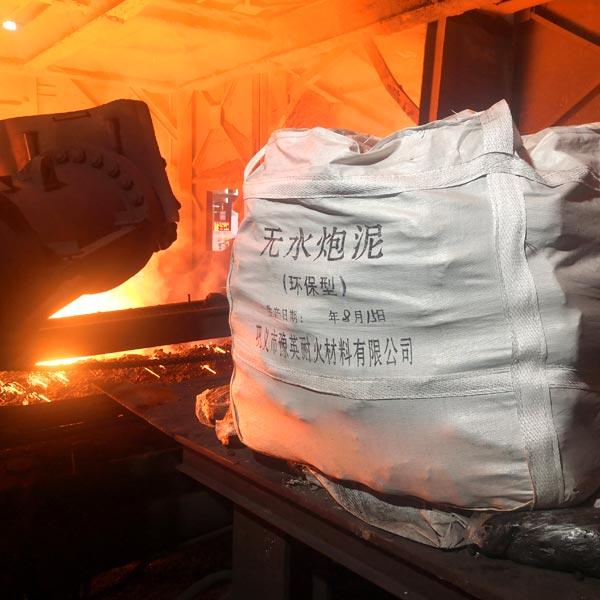
We specialize in producing various types of tap hole clay. Our tap hole clay protects the blast furnace hearth, increases production and saves costs! We are your best choice for tap hole clay suppliers.
Tap hole clay is a refractory material used to seal the tap hole of a blast furnace during steelmaking. It is black and blocky in appearance and is mainly used to protect the furnace lining and ensure the smooth flow of molten iron. As a taphole clay manufacturer , the main components of tap hole clay include refractory aggregates (such as corundum, mullite, coke, etc.) and binders (such as water or organic materials such as tar pitch, phenolic resin, etc.). These components work together to give the tap hole clay good plasticity, lubricity and sintering properties, thereby effectively sealing the taphole and protecting the furnace lining.
The main binders of taphole clay are: tar, pitch, resin, etc., which can be customized according to the requirements of taphole clay users
The raw material chemical composition of taphole clay is developing towards high purity, low impurity content, carbonaceous and alkaline.
As an excellent supplier of tap hole clay, we will fully understand the actual situation and data of the blast furnace that uses the taphole clay before producing it, and produce suitable taphole clay based on the real blast furnace data. During the use of taphole clay, we will also understand the various data and conditions of the taphole clay work, and constantly adjust the performance of the taphole clay according to the changes on the blast furnace site, so that the tap hole clay can reach the best state at work.
Analysis of Problems in the Use of Blast Furnace waterless Taphole clay
Effect of TiO2 on taphole clay properties
Anhydrous tap hole mix for blast furnace tap hole
Refractory wet mud used to block the iron outlet can be divided into two categories: water cannon mud and waterless gun mud. On large and medium -sized blast furnaces on high top pressure and high degree of smelting.
Refractory ramming mass (refractory taphole mass) is a kind of Refractory used for lining of blast furnace tapping groove. It is mainly used to protect the blast furnace out of the ditch from high-temperature hot metal and slag erosion and erosion, and has excellent high-temperature resistance and wear resistance. The ramming material for the iron discharge ditch is usually composed of corundum, silicon carbide and carbonaceous material, which has the ability of resisting hot metal and molten slag erosion and scouring, reburning line change small, strong resistance to a variety of oxidation characteristics. The construction of the ramming material for the iron ditch is convenient, easy to dismantle and repair, does not produce harmful gas, and is beneficial to environmental protection.
In the blast furnace smelting process, blast furnace taphole clay, as a key plastic material, plays a vital role. This article will introduce in detail the product characteristics, working principle and innovation of blast furnace taphole clay in improving furnace stability and production efficiency.
Anhydrous taphole mud/taphole clay refers to taphole mud made of tar, resin, etc. as binders and corundum, bauxite, clay, silicon carbide, coke powder, etc. as raw materials. Anhydrous carbon taphole mud is made by a mud mill. When rolling, oil is added first, then block materials (clay and asphalt), and then powder materials (coke powder and clinker powder) are added after crushing. After pressing and mixing, the mud can be produced when it meets the standards.
Silica bricks for coke ovens are siliceous refractory products used for building coke ovens with tridymite as the main crystal phase. Coke oven silica bricks are used to build regenerator walls, ramps, combustion chambers, carbonization chambers and furnace roofs of coke ovens. Silica brick is an acid refractory material with good resistance to acid slag erosion. The softening temperature under load is as high as 1640-1670 °C, and the volume is relatively stable in long-term use at high temperature.
Anhydrous tap hole mix for blast furnace tap hole
high alumina refractory bricks is mainly used around the furnace cover, electrode holes and exhaust holes of electric furnaces, and its service life is 1 to 2 times longer than that of silica bricks.



